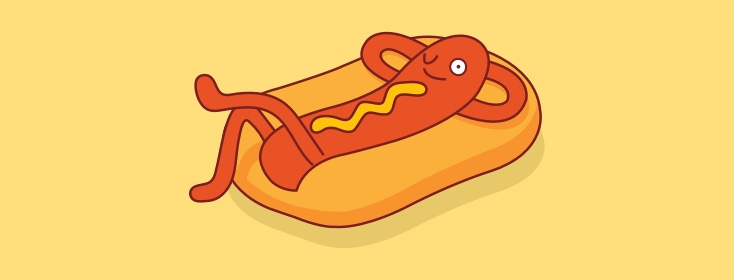Condiments - the Good, the Bad and the Ugly
Condiments are powerful! Powerful flavors in small amounts. Powerful doses of calories, carbohydrates, fat and sodium in some cases. And, even powerful emotions – Americans scoff at the European idea of mayonnaise with fries, and some Chicago vendors literally refuse to put ketchup on a hot dog.
How I rate condiments
It’s the potential doses of calories, carbohydrates, fat and sodium that I base my ratings on, and it’s very important to note that “good”, “bad” and “ugly” have nothing to do with the condiments themselves or with my personal tastes (I like them all). Ultimately, it’s all about portion size, as you will see.
Healthy condiments
Salsa is commonly made with cooked tomatoes (or tomatillos for green – salsa verde), chili peppers, onion, garlic, herbs (like cilantro) spices (even cinnamon and cocoa), lime juice, and other ingredients unique to individual recipes. Pico de gallo, my favorite, is a salsa made with fresh tomatoes. Most salsas are low calorie, no fat, low carbohydrate, and low sodium treats, and it’s the portion size of the foods you’re eating with the salsa you’ll need to monitor. Salsa may be known as a dip for tortilla chips, but salsa also makes a great dressing for your salad.
Honorable mention goes to mustard, ajvar (roasted red bell peppers), baba ganoush (roasted eggplant), and hummus (mashed chickpeas blended with tahini), each of which can include 100-200 milligrams of sodium per tablespoon (hummus also contains approximately 2 grams carbohydrate /serving from the chickpeas).
Unhealthy condiments
I love soy, and I love soy sauce. But, soy sauce (made from fermented soybeans) can deliver 1,000 milligrams of sodium per tablespoon. Soy sauce has no impact on blood glucose – no carbohydrate – and soy sauce is low calorie so there’s no concern about weight gain. But, high blood pressure is a serious issue for the majority of people with type 2 diabetes, and the concentration of sodium in soy sauce is so high that portion control becomes both crucial and nearly impossible. Each of those dozen tiny takeout packets that come with your Chinese food has ⅓ your daily sodium recommendation.
“Honorable” mention goes to ketchup, which is most often sweetened with corn syrup (or high fructose corn syrup) to the tune of 5 grams carbohydrate per tablespoon.
Really unhealthy condiments
I’m going with salad dressings as a group here strictly because of portion size. The nutrition tally for the amount of dressing you might be tempted to put on your salad, especially calories, is going to look ugly compared to the 2 tablespoons serving size on the nutrition labels. And, the bigger you make that healthy salad, the more likely you are to add an extra 300 or 400 calories to your daily diet with salad dressing – that’s even uglier.
Salad dressing best demonstrates the important issue with all condiments – portion size. Nutrition information usually specifies a teaspoon of mustard, a tablespoon of mayonnaise and ketchup, or two tablespoons of salad dressing. Do some measuring at home, and see if those portions seem consistent with your personal tastes. If not, maybe some pico de gallo will hit the spot for you too.

Join the conversation